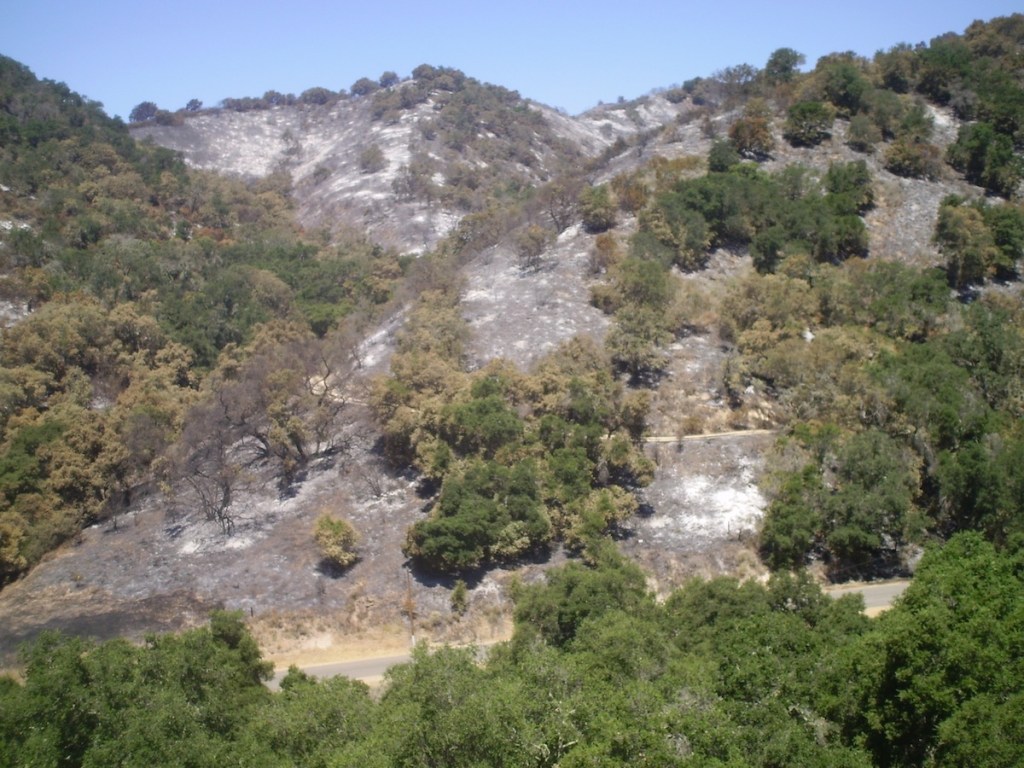Tepusquet Canyon lies in the “hinterlands” of Santa Barbara County, as former supervisor Peter Adam liked to say, in the hill country east of Santa Maria. Its proximity to Los Padres National Forest might have been what Adam had in mind when he once jokingly suggested using helicopters with fire torches for prescribed burns, but the Santa Barbara County Fire Department has $6.44 million with which to perform more sophisticated methods of vegetation removal over the next four years.
About 300 people live along Tepusquet Road and its side streets, which stretch for about 15 steep, winding miles from Foxen Canyon Road up to State Route 166. The canyon’s 164 parcels range from 10-acre ranchettes to ranches that sprawl for several hundred acres. The Zaca Fire came through twice in 2007, resident Renée O’Neill recalled, and the most recent fire, the Alamo Fire, burned 23,000 acres in 2017.
“We are very vulnerable to wildland fires,” O’Neill said, and the area was fortunate to only lose one home during the Alamo Fire, as well as several outbuildings. “It burned everything up to the defensible space,” she said of her home. The county requires a groomed, low-vegetation strip of 100 feet around homes in the wildfire hazard zones, but O’Neill’s family has extended theirs to 1,000 feet over the years. As a longtime member of the county’s Fire Safe Council, O’Neill takes fire safety seriously and often speaks to the Board of Supervisors on that and other topics.
If not for O’Neill and fellow Tepusquet resident Linda Tunnell’s conversations with and emails to all the Tepusquet residents, said Captain Fred Tan, a vegetation manager with County Fire, the grant process would not have had the nearly 100 percent buy-in it needed from private property owners.
Over the next few years, about 32 miles of roadway — Tepusquet, Colson Canyon, Ruiz Canyon, Blazing Saddle, and Autumn roads — will be mowed or brush cut for up to 30 feet off the road where possible. “A lot of fires start along roads,” said Tan, “from hot catalytic converters or sometimes from power lines.” He added that home protection was just one of their goals; the area also holds a communications repeater and an automated weather station and is also an important watershed for the vineyards, ranches, and farms to the south.
Prescribed burns are planned for 2,064 acres; goats or sheep will mow 399 acres of the more perpendicular landscapes; and fuel breaks will be established or re-established along 138 acres. These new projects will go through CEQA, or the California Environmental Quality Act, said Tan, and those costs, including a contractor to manage the process, are part of the large grant. They are also looking to see if a community defensible space is possible, said Tan, who emphasized that all the treatments not only protect residents and homes but also give firefighters large, cleared, safe spaces from which to fight a wildfire.
Captain Tan and Fire Marshal Rob Hazard were the chief writers for the multimillion-dollar grant application to the state Forestry and Fire Protection department, and they plan to build off the success of a similar project in the Lompoc Valley. That project enabled them to add an 18-member vegetation fuels crew — usually younger people who are interested in becoming professional firefighters led by a couple of veterans — which will be kept on for the Tepusquet projects.
“Words cannot begin to express how appreciative our residents are of this very generous grant,” said O’Neill, “and for S.B. County Fire’s incredible efforts in applying for it and implementing the project. Yippee!”
Support the Santa Barbara Independent through a long-term or a single contribution.

